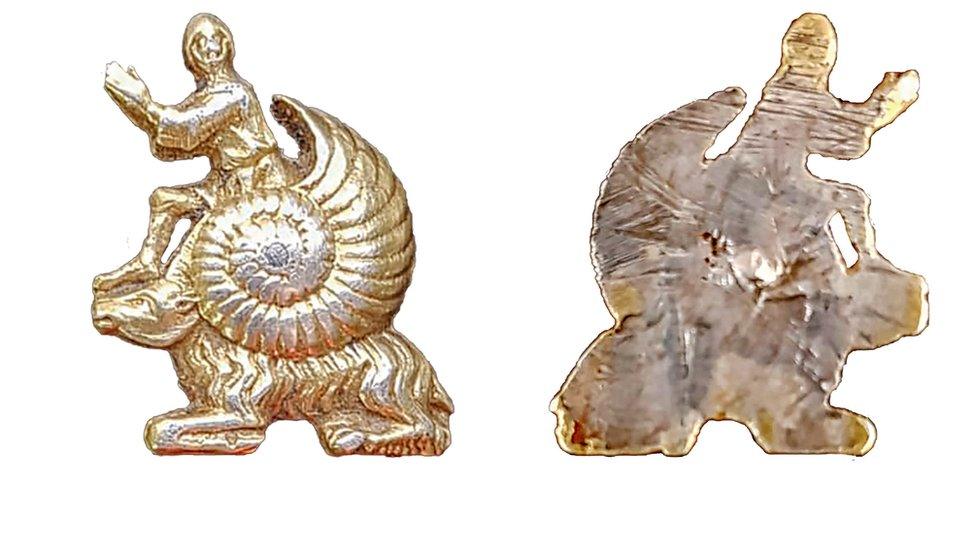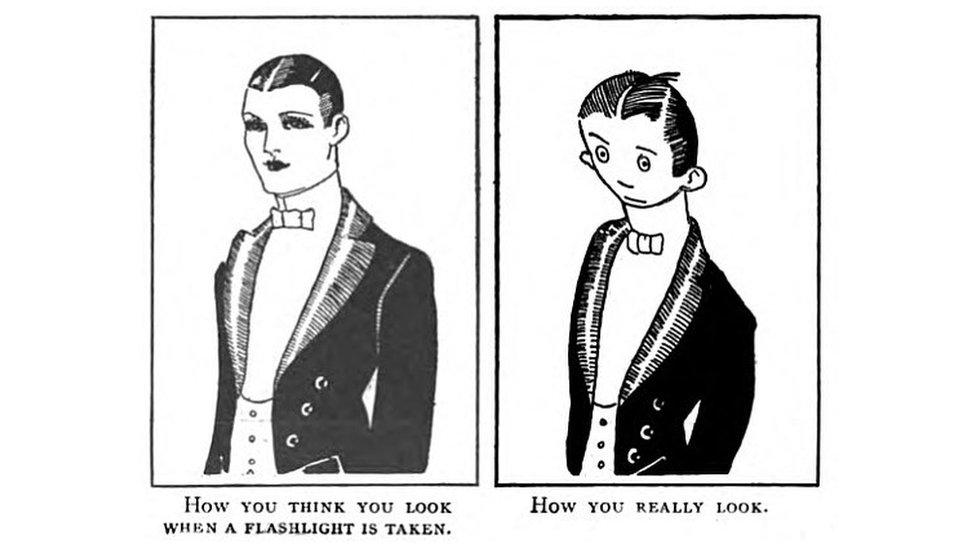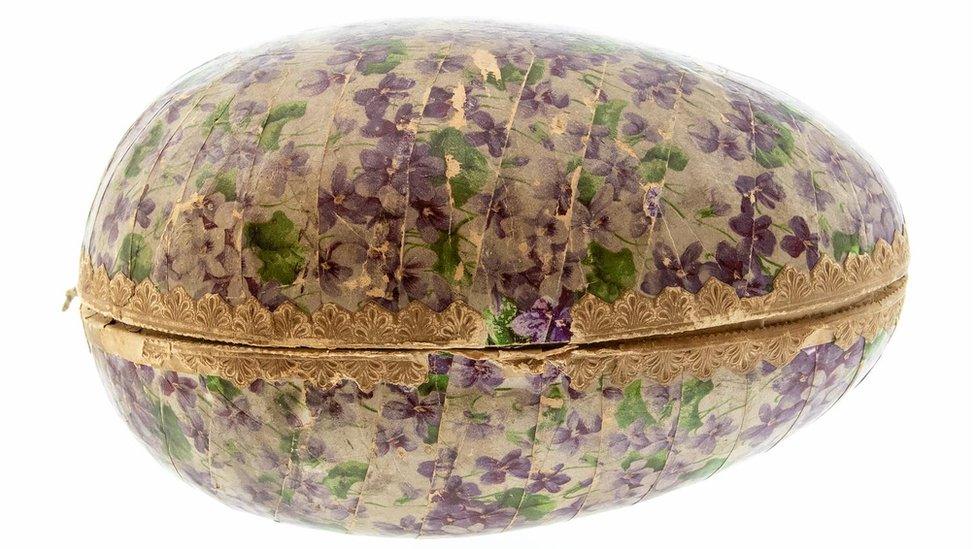Yorkshire snail man mount was 'medieval meme'
- Published

The unusual item was found in Pontefract in 2020
An object showing a man emerging from a snail shell on the back of a goat might have been a form of medieval "meme", according to experts.
The silver-gilt mount is believed to have religious connotations and dates from 1200 to 1350.
The British Museum said snails were often used to symbolise cowardice in the medieval period.
The mount was found in Pontefract, West Yorkshire, in 2020 and the Wakefield Museum hopes to acquire it.
Beverley Nenk, curator of later medieval collections at the British Museum, said: "This unusual silver-gilt mount may once have been attached to a leather belt or strap, or perhaps worn as a badge.
"The image of the praying knight emerging from a snail shell atop a goat implies an element of parody or satire.
"Snails are often depicted in the margins of medieval illuminated decorated manuscripts and are thought to symbolise cowardice, and this may be the intended meaning."

What is a meme?
The word meme was coined by Richard Dawkins in his 1976 book The Selfish Gene
Dawkins called memes "ideas that spread from brain to brain"
The Oxford English Dictionary, external defines memes as images, videos or text that are copied and spread by internet users, often with variations

She said it may be a satirical reference to "cowardly or non-chivalric behaviour of opponents in battle". It could, Ms Nenk added, have also been intended as a parody of the upper classes.
The item has been declared Treasure and the finder's name has been kept anonymous.

Follow BBC Yorkshire on Facebook, external, Twitter, external and Instagram, external. Send your story ideas to yorkslincs.news@bbc.co.uk or send video here.
Related topics
- Published16 April 2018

- Published16 March 2021

- Published11 March 2021
